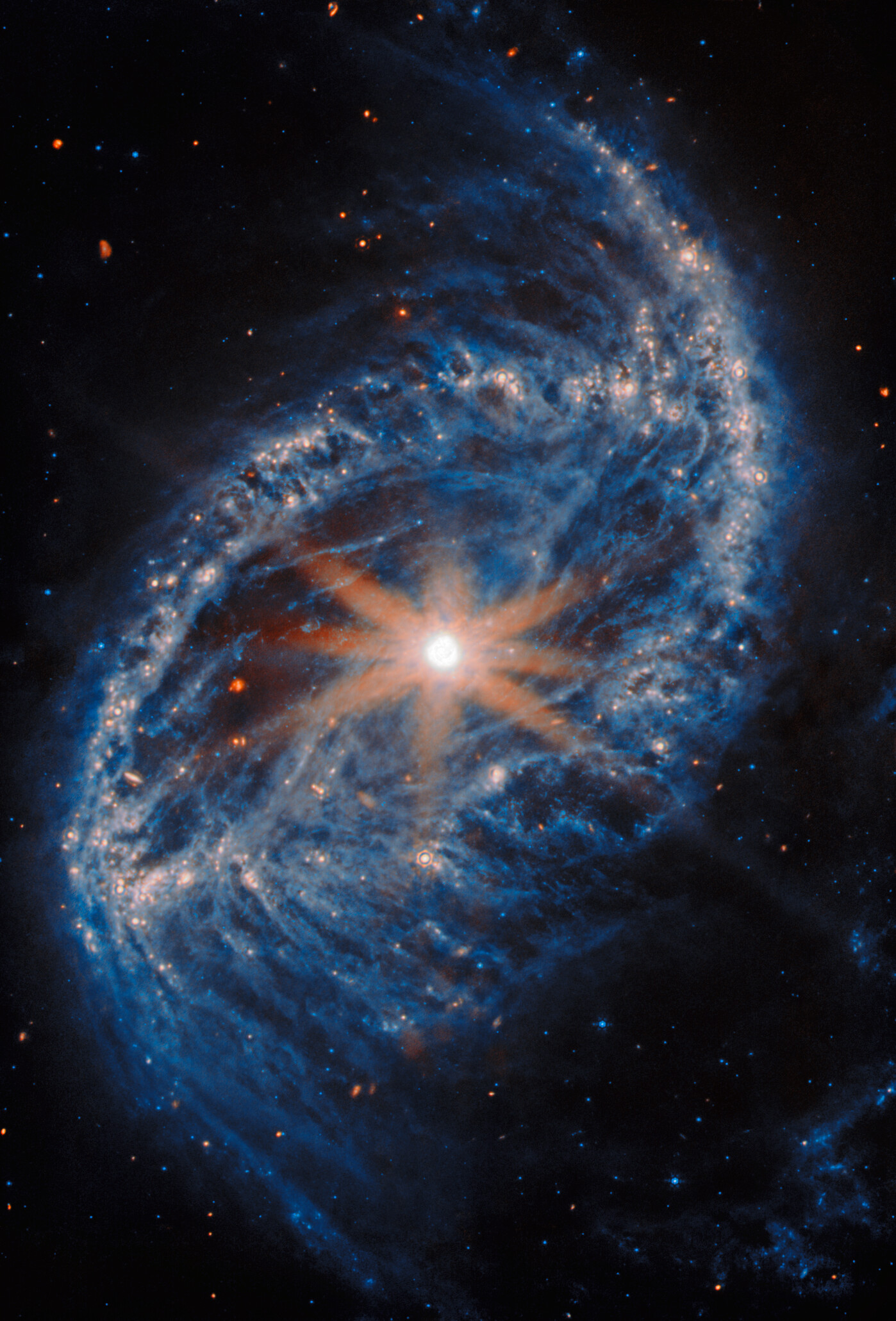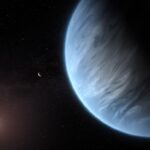ภาพล่าสุดจากกล้องโทรทรรศน์อวกาศเจมส์ เวบบ์ (James Webb Space Telescope) ได้เผยความลับเกี่ยวกับการก่อกำเนิดดาวฤกษ์ในกาแล็กซี NGC 2566 ซึ่งเป็นกาแล็กซีชนิดก้นหอยที่ตั้งอยู่ในกลุ่มดาวเพอพิส (Puppis) และอยู่ใกล้กับเรามาก เพียง 76 ล้านปีแสง ด้วยระยะทางที่ใกล้ ทำให้เป็นเป้าหมายที่สำคัญสำหรับการศึกษาในรายละเอียด เช่น กระจุกดาวและเมฆก๊าซ
เครื่องมืออินฟราเรดกลาง (Mid-InfraRed Instrument) หรือ MIRI (ไมรี) ของกล้องเวบบ์ ได้แสดงให้เห็นกลุ่มเมฆฝุ่นหนาแน่นระหว่างดาวที่ปกคลุม NGC 2566 รวมถึงใจกลางกาแล็กซีที่สว่างและหนาแน่น ภาพใหม่ของ NGC 2566 เหล่านี้ถูกรวบรวมเป็นส่วนหนึ่งของโครงการสังเกตการณ์ที่มุ่งทำความเข้าใจความเชื่อมโยงระหว่างดาวฤกษ์ ก๊าซ และฝุ่นในกาแล็กซีใกล้เคียงที่มีการก่อกำเนิดดาวฤกษ์ โดย NGC 2566 เป็นหนึ่งใน 55 กาแล็กซีในเอกภพท้องถิ่นที่ถูกศึกษาโดยกล้องเวบบ์ในโครงการนี้
เพื่อทำความเข้าใจกระบวนการก่อกำเนิดดาวฤกษ์ในกาแล็กซีใกล้เคียงได้อย่างถ่องแท้ นักดาราศาสตร์จะนำข้อมูลจากกล้องเวบบ์มารวมกับการสังเกตการณ์จากกล้องโทรทรรศน์อื่น ๆ เช่น กล้องโทรทรรศน์อวกาศฮับเบิล (Hubble Space Telescope) ซึ่งเคยบันทึกภาพ NGC 2566 มาก่อนหน้านี้ ข้อมูลจากฮับเบิลจะช่วยให้นักวิจัยสามารถสำรวจจำนวนดาวฤกษ์ในกาแล็กซีใกล้เคียง โดยเฉพาะดาวฤกษ์อายุน้อยที่สว่างในช่วงคลื่นอัลตราไวโอเลตและแสงที่มองเห็น ซึ่งเป็นช่วงที่ฮับเบิลมีความไวสูง
นอกจากนี้ ยังมีการนำข้อมูลจากกล้องโทรทรรศน์วิทยุ Atacama Large Millimeter/submillimeter Array (ALMA) (อัลมา) ซึ่งมีจานรับสัญญาณวิทยุ 66 จาน มาใช้ประกอบการศึกษา ALMA ยังให้มุมมองที่ละเอียดของเมฆก๊าซเย็นซึ่งเป็นแหล่งกำเนิดดาวฤกษ์ เมื่อรวมข้อมูลจากกล้องเวบบ์ ฮับเบิล และอัลมา จะช่วยให้ได้มุมมองที่สมบูรณ์ยิ่งขึ้นของก๊าซเย็น ฝุ่นอุ่น และดาวฤกษ์ที่สว่างไสวใน NGC 2566
ข้อมูลอ้างอิง: ESA/Webb, NASA & CSA, A. Leroy




